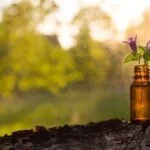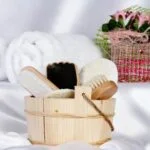Aromatherapy facials are a wonderful way to give your skin some much-needed TLC in the comfort of your own home. By combining the therapeutic benefits of essential oils with a facial routine, you can create a rejuvenating and relaxing experience for both your skin and mind. In this article, we will explore what aromatherapy facials are, their benefits, and how you can easily perform one at home.
Aromatherapy facials involve the use of essential oils, which are highly concentrated plant extracts known for their various healing properties. These oils are selected based on their specific qualities and tailored to address different skin concerns such as acne, dryness, or signs of aging. When applied topically during a facial, they can deeply nourish and hydrate the skin while promoting relaxation and reducing stress.
In addition to providing physical benefits, aromatherapy facials have psychological advantages as well. The aroma of essential oils has been found to greatly impact emotions and mood by stimulating the olfactory system in our brains. By incorporating scents that promote relaxation or uplift spirits, you can create a spa-like experience right at home.
By following simple steps and using readily available ingredients, anyone can enjoy the benefits of an aromatherapy facial without leaving their house. In the next sections, we will discuss how to gather the necessary materials, prepare your skin properly, choose suitable essential oils for your needs, and guide you through each step of performing an aromatherapy facial at home.
So let’s dive in and discover how easy it is to achieve beautiful skin while indulging in a blissful self-care ritual.
Gather the Required Materials for an Aromatherapy Facial at Home
To start your aromatherapy facial at home, it is important to gather the necessary materials. Having everything you need in one place will help create a smooth and relaxing experience. Here are the essential items you will need:
1. Essential Oils: Start by selecting the essential oils that best suit your skin type and concerns. For example, if you have dry skin, lavender or geranium oil can provide hydration. Tea tree or eucalyptus oil works well for oily or acne-prone skin.
2. Carrier Oil: Choose a carrier oil such as jojoba, almond, or coconut oil to dilute the essential oils before applying them to your face. Carrier oils help moisturize and protect your skin from any potential irritation.
3. Facial Cleanser: It is crucial to have a gentle cleanser on hand to properly cleanse your face before starting the facial. Look for a cleanser suitable for your skin type to avoid stripping away natural oils.
4. Exfoliant: Opt for either a physical scrub or a chemical exfoliant to slough off dead skin cells and reveal smoother, brighter skin underneath. Be sure not to over-exfoliate, as this can lead to irritation.
5. Facial Steamer or Hot Towel: This is an optional but highly beneficial addition to enhance your aromatherapy facial experience. A facial steamer helps open up pores and improve the absorption of essential oils into the skin.
6. Face Mask Ingredients: Depending on your specific needs, gather ingredients for a homemade face mask. Natural ingredients like honey, yogurt, avocado, and oats can be used to create nourishing masks tailored to your skincare concerns.
7. Clean Towels: Have clean towels on hand for drying your face throughout the process.
8. Moisturizer: After completing the facial steps, it’s important to apply a suitable moisturizer that locks in hydration and seals all the beneficial properties of the essential oils into your skin.
By having all these materials ready in advance, you can create a calming and uninterrupted atmosphere during your aromatherapy facial at home.
Preparing Your Skin for the Facial
Before embarking on an aromatherapy facial at home, it is crucial to properly prepare your skin. Cleansing and exfoliating are essential steps that ensure your skin is clean, free from impurities, and receptive to the benefits of the aromatherapy products you will be using.
To start, gather your cleansing products. Look for a gentle facial cleanser that suits your skin type. Whether you have oily, dry, or sensitive skin, there is a cleanser out there designed specifically for you. Apply a small amount of the cleanser onto damp skin and massage it in circular motions, focusing on areas prone to congestion like the T-zone.
After rinsing off the cleanser with lukewarm water, it’s time to exfoliate. Exfoliation helps remove dead skin cells that can clog pores and dull your complexion. Choose an exfoliator that suits your skin’s needs – whether it’s a physical scrub with tiny granules or a chemical exfoliant containing ingredients like alpha-hydroxy acids (AHAs) or beta-hydroxy acids (BHAs).
When using a physical scrub, gently massage it onto damp skin in upward circular motions for about one minute before rinsing it off. If you prefer a chemical exfoliant, follow the product’s instructions carefully to avoid overexfoliation.
Remember to be mindful of your skin’s sensitivity and adjust these steps accordingly. It is also important not to overcleanse or over-exfoliate as this may strip away the natural oils and disrupt the balance of your skin.
By properly cleansing and exfoliating your face before an aromatherapy facial at home, you are creating a clean canvas for maximum absorption of essential oils and other products during each step of the treatment. This prepares your skin to fully reap the benefits of aromatherapy while promoting overall relaxation and rejuvenation.
Choosing the Right Essential Oils for Your Skin Type and Concerns
When it comes to performing an aromatherapy facial at home, one of the most important steps is choosing the right essential oils for your skin type and concerns. Different essential oils have different properties and benefits, so it’s crucial to select ones that will address your specific needs.
Firstly, determine your skin type. Is it dry, oily, combination, or sensitive? This will help you narrow down the options and find oils that are most suitable for you. For dry skin, look for essential oils with moisturizing properties such as rosehip seed oil or lavender oil. If you have oily skin, consider using oils like tea tree oil or bergamot oil which have clarifying and balancing effects.
Next, identify any specific concerns you want to address. Are you looking to reduce acne or blemishes? Consider using oils such as tea tree oil or chamomile oil which have anti-inflammatory and antibacterial properties. If aging is a concern, essential oils like rosemary oil or frankincense oil can help promote cell regeneration and reduce the appearance of fine lines and wrinkles.
| Skin Type | Concerns | Recommended Essential Oils |
|---|---|---|
| Dry | Dullness, dehydration | Rosehip seed oil, lavender oil |
| Oily | Acne-prone, excessive sebum production | Tea tree oil, bergamot oil |
| Combination | Oily T-zone, dry patches | Lavender oil, geranium oil |
| Sensitive | Irritation, redness | Chamomile oil, calendula oil |
| Aging | Fine lines, wrinkles | Rosemary oil, frankincense oil |
It’s important to note that essential oils are highly concentrated and should be diluted before application. To ensure safety and effectiveness, mix a few drops of your chosen essential oils with a carrier oil such as jojoba oil or almond oil. This will help prevent any adverse reactions and also provide extra nourishment for your skin.
By selecting the right essential oils based on your skin type and concerns, you can customize your aromatherapy facial to target specific issues and achieve optimal results.
Step-by-Step Guide
Step 1: Steam Your Face to Open Up the Pores
The first step in performing an aromatherapy facial at home is to steam your face. This helps to open up the pores, allowing for better absorption of the essential oils and other products that you will be using. To do this, fill a large bowl with hot water and add a few drops of your chosen essential oil.
Lean over the bowl, covering your head with a towel, and allow the steam to envelop your face for about 5-10 minutes. Take slow deep breaths to fully enjoy the aromatic experience.
Step 2: Apply the Chosen Essential Oil Blend or Single Oil
After steaming, it’s time to apply the chosen essential oil blend or single oil to your skin. Start by applying a small amount to your fingertips and gently massage it onto your face. Be sure to avoid the sensitive eye area. The essential oils you choose will depend on your skin type and concerns. For example, if you have dry skin, lavender or rose essential oil can provide hydration and nourishment.
Step 3: Perform Facial Massage Techniques for Relaxation and Absorption
Next, incorporate facial massage techniques into your routine for relaxation and optimal absorption of the oils. Using upward circular motions, gently massage your entire face starting from the chin and moving towards the temples. This will help increase blood circulation and promote lymphatic drainage, giving your skin a healthy glow.
Step 4: Apply a Homemade Aromatherapy Face Mask
Now it’s time to apply a homemade aromatherapy face mask. You can create a simple mask by combining ingredients such as honey, yogurt, or clay with a few drops of essential oils that are suitable for your skin type. Mix everything together until you achieve a smooth consistency.
Step 5: Allow the Mask to Sit and Work Its Magic
Once you have applied the mask evenly to your face, allow it to sit for about 10-15 minutes. Take this time to relax and unwind while the mask works its magic. You can enhance the experience by practicing deep breathing or meditation.
Step 6: Rinse Off the Mask and Pat Dry Your Face
After the recommended time has passed, rinse off the mask with lukewarm water. Ensure all traces of the mask are removed from your skin. Pat your face dry gently with a clean towel, avoiding any harsh rubbing or pulling motions that could irritate the skin.
Step 7: Apply a Moisturizer and Any Additional Treatments as Needed
To complete your at-home aromatherapy facial, apply a moisturizer suitable for your skin type. This will help lock in moisture and provide hydration to your skin. Additionally, if you use any other treatments like serums or eye creams, now is the perfect time to incorporate them into your skincare routine.
By following these step-by-step guidelines, you can enjoy a relaxing and rejuvenating aromatherapy facial in the comfort of your own home. Customize each step according to your skin’s needs and concerns for optimal results. Remember, regular practice of aromatherapy facials can yield long-lasting benefits for both your physical and mental well-being.
Tips for Enhancing Your Aromatherapy Facial Experience
To truly make your at-home aromatherapy facial experience a luxurious and relaxing one, there are several tips you can follow to enhance the overall ambiance and effects of the treatment.
Setting the mood is an essential aspect of creating a spa-like atmosphere for your facial. Start by playing calming music in the background and dimming the lights to create a soothing environment. Soft lighting can help you relax and unwind while receiving your facial, allowing you to fully immerse yourself in the experience.
Creating a spa-like ambiance in your bathroom can further enhance your aromatherapy facial. Decorate the space with scented candles or diffusers using essential oils that complement your chosen blend. Consider placing fresh flowers or plants in the room to bring nature indoors and promote relaxation.
Using a facial steamer or hot towel can be an excellent way to enhance the effects of your aromatherapy facial. Steam helps open up pores, allowing for better absorption of essential oils and mask ingredients into the skin. If you don’t have a facial steamer, simply soak a soft towel in hot water, wring it out, and place it over your face for a few minutes before applying oils or masks.
Incorporating meditation or deep breathing exercises during your aromatherapy facial can also enhance relaxation and stress relief. As you perform each step of the treatment, take deep breaths in through your nose and slowly exhale through your mouth. Focus on clearing your mind, being present in the moment, and allowing yourself to fully unwind from any daily stressors.
By following these tips, you can create an enhanced atmosphere for your at-home aromatherapy facial, making it not only beneficial for your skin but also for your overall well-being.
Common Mistakes to Avoid When Doing an Aromatherapy Facial at Home
When it comes to doing an aromatherapy facial at home, it’s important to be aware of some common mistakes that many people make. By avoiding these mistakes, you can ensure that you have a successful and enjoyable experience.
- Overdoing the essential oils or using irritating ones: Essential oils are powerful and should be used in moderation. Using too much can lead to skin irritation or allergic reactions. It’s also important to choose essential oils that are suitable for your skin type and concerns. For example, if you have sensitive skin, it’s best to avoid strong irritants like peppermint or cinnamon oil.
- Using incorrect techniques or excessive pressure during facial massage: Facial massage is an important part of an aromatherapy facial as it helps promote relaxation and absorption of the essential oils. However, using incorrect techniques or applying excessive pressure can do more harm than good.
- Leaving the mask on for too long or not long enough: Aromatherapy face masks are designed to be left on for a specific amount of time to allow their beneficial ingredients to penetrate the skin. Leaving the mask on for too long may cause dryness or irritation, while not leaving it on long enough may prevent you from fully enjoying its benefits.
- Neglecting to properly clean and sanitize your tools and equipment: It’s important to clean and sanitize your tools and equipment before and after each use to prevent the spread of bacteria, dirt, and oils. Neglecting this step can lead to breakouts or other skin issues.
To avoid this mistake, always dilute your essential oils properly with a carrier oil before use. This will help prevent any adverse reactions and ensure that the oils are gentle on your skin.
When performing a facial massage, use gentle, upward strokes with your fingertips. Avoid pulling or tugging on the delicate skin around the eyes and mouth. Applying too much pressure can cause redness, irritation, or even bruising.
Always follow the instructions provided with your face mask and set a timer if necessary. This will ensure that you get the optimal results without any unwanted side effects.
After each use, wash your brushes, sponges, and any other tools you used with warm water and gentle soap. Rinse thoroughly and allow them to air dry before storing them in a clean and dry place.
By avoiding these common mistakes, you can ensure that your aromatherapy facial at home is a success. Enjoy the relaxing benefits of essential oils while taking care of your skin in the comfort of your own home.
Post-Facial Care and Maintenance Tips for Long-Lasting Results
After completing an aromatherapy facial at home, it is important to follow a post-facial care routine to maintain the benefits and achieve long-lasting results. This section will provide you with some essential tips on how to take care of your skin and incorporate aromatherapy products into your daily skincare regimen.
One of the most important steps in post-facial care is implementing a skincare routine that is tailored to your specific skin type. This includes cleansing, toning, and moisturizing. Choose gentle and non-irritating products that are suitable for your skin type to avoid any adverse reactions. Additionally, incorporating serums or face oils can further enhance the effects of your aromatherapy facial and provide nourishment to your skin.
Regularly using aromatherapy products can help maintain the benefits of the facial and promote healthy-looking skin. Look for skincare products that contain essential oils that are suitable for your skin type and concerns. These products can provide additional hydration, soothe inflammation, and improve overall skin health. Incorporate them into your daily skincare routine by using them as part of your cleanser, toner, or moisturizer.
Another vital aspect of post-facial care is protecting your skin from sun damage. After an aromatherapy facial, your skin may be more sensitive to sunlight due to exfoliation or use of certain essential oils. Therefore, it is crucial to apply a broad-spectrum sunscreen with SPF before going outside. This will safeguard your skin from harmful UV rays and prevent any further damage.
Lastly, taking care of your overall well-being can have a significant impact on the health and appearance of your skin. Make sure to prioritize eating a balanced diet rich in fruits, vegetables, and antioxidants. Stay properly hydrated by drinking enough water throughout the day. Get enough sleep each night to allow your body time to repair itself overnight. Reducing stress through exercise, meditation, or relaxation techniques can also contribute to healthy skin.
By following these post-facial care and maintenance tips, you can extend the rejuvenating effects of your aromatherapy facial and enjoy long-lasting results. Remember that consistency is key, so make sure to incorporate these practices into your daily routine for the best outcomes. With proper care and maintenance, your skin will continue to look radiant and healthy.
Conclusion
In conclusion, incorporating aromatherapy into your regular skincare routine can have a multitude of benefits for your skin and overall well-being. An aromatherapy facial at home is not only a luxurious and relaxing experience, but it also allows you to customize the treatment according to your specific skin type and concerns. By following the step-by-step guide outlined in this article, you can easily recreate a professional spa-like experience in the comfort of your own home.
The rejuvenating effects of an aromatherapy facial are evident from the very beginning. Starting with the cleansing and exfoliating process, you can effectively remove dirt, oil, and dead skin cells that may be clogging your pores. This prepares your skin for better absorption of the essential oils and other nourishing ingredients that follow.
Throughout the aromatherapy facial, the chosen essential oil blend or single oil provides additional benefits tailored to your individual needs. Whether you require hydration, soothing properties, or help with conditions such as acne or inflammation, there is an essential oil that can address those concerns. Combined with massage techniques that promote relaxation and enhance product absorption, these oils penetrate deeply into your skin for maximum effectiveness.
To prolong the benefits of an aromatherapy facial at home, it is important to establish a regular skincare routine based on your specific skin type. Incorporating products containing essential oils into your daily regimen will help maintain healthy and glowing skin. Additionally, protecting your skin from sun damage with SPF and taking care of your overall well-being through activities such as exercise and stress management will support long-lasting results.
By utilizing these tips discussed throughout this article and striving for consistency in caring for your skin, you can enjoy all the rejuvenating effects an aromatherapy facial has to offer. So why not treat yourself to this indulgent self-care practice and unlock the potential of essential oils for a truly revitalizing experience?
Frequently Asked Questions
How to Do an Aromatherapy Facial?
An aromatherapy facial is a relaxing and rejuvenating treatment that combines the therapeutic benefits of essential oils with a facial massage. To start, you’ll need to choose the right essential oils based on your skin type and desired effects. Dilute a few drops of the selected essential oil in a carrier oil, such as jojoba or sweet almond oil.
Next, cleanse your face thoroughly and apply the diluted oil mixture all over your face, gently massaging it into the skin using upward circular motions. The facial massage helps promote blood circulation and lymphatic drainage while allowing the essential oils to penetrate deeper into the skin. After massaging for about 10-15 minutes, you can remove any excess oil with a warm towel or simply leave it on as a nourishing treatment.
What Is an Aroma Facial?
An aroma facial is a type of facial treatment that incorporates aromatherapy principles to enhance both the physical and mental well-being during the session. It involves using essential oils extracted from plants to stimulate various sensations and relaxation responses in the body and mind. These customized facials often begin with a consultation to determine individual needs and concerns.
The therapist then selects specific essential oils based on these preferences and blends them together for use during the facial. Throughout the treatment, these aromatic oils are applied to the face through massage techniques and incorporated into other skincare steps like cleansing, toning, or masking. An aroma facial provides not only skincare benefits but also a holistic experience by working directly with one’s sense of smell.
How Do I Do Aromatherapy at Home?
Doing aromatherapy at home can be simple yet effective in bringing relaxation and wellness into your environment. Start by selecting high-quality essential oils that suit your personal preferences or therapeutic goals – lavender for relaxation or eucalyptus for invigoration, for example. Use an aromatherapy diffuser or oil burner to disperse the scent throughout your space or blend them with carrier oils such as coconut or grapeseed oil for topical application.
Essential oils can be used in various ways at home, like adding a few drops to your bath, creating soothing room sprays, or incorporating them into homemade products such as candles or lotions. It’s important to do some research and follow proper guidelines on dilution ratios and safety precautions to ensure you’re using the essential oils correctly and safely at home.

Are you looking for a natural way to improve your health and wellbeing?
If so, aromatherapy may be the answer for you.






